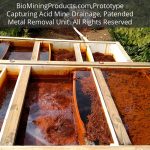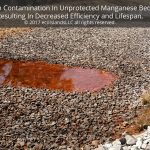#5: What is a PermaCycler and how can it increase my grow’s output?
Hi All!!! Thanks for joining me again as we continue to explore the whys and the wherefores of PermaCycler, our mission, and how we are getting work done. As mentioned in previous posts, EcoIslands LLC started in 2010 installing BioHaven Floating Islands, then moved on to acid mine drainage as our primary focus in research and business. Since we built our first PermaCycler in 2014 for GreenSky Collective, we have been doing serious research in semi-closed loop (more here) agricultural cycling.
First, a few of my definitions. By no means exhaustive, in my own words, and yes I link to wikipedia. Its a blog, not a submission for peer review.
Conservation of Mass and Energy: this is the law(s) of nature that determines and enlightens the products and pathways of any system. Water in, water out, energy in, energy out, take into account entropy. Conservation of mass and energy is the overriding principle in water treatment. (Mine Water. Younger, Banwart, and Hedin.)
Aquaculture: growing lots of fish in big tanks and using a physical or chemical system to clean the water or constantly using fresh water to make up losses. Fish exhale ammonia (NH3) which must be removed from the system or else they perish.
Aquaponics: Connecting the effluent of from aquaculture tanks to a grow room or grow bed of some form. Bacterial biofilm in the growth media (on soil, gravel, or roots) convert the ammonia to nitrite. Then, different bacteria convert the nitrite to nitrate which is a major macronutrient for plants. This cleans the water of fish waste and ammonia, benefits the plants enormously, saves money on fertilizers, and keeps the fish raw and wriggling.
Macronutrients or ‘nutes: Plant soluble forms, Nitrate (NO3-), Phosphate (PO4-) Potassium (K) and Carbon as Carbon Dioxide (CO2) or organic carbon. These are cation and anions and molecules that are required in large concentrations compared to the micronutrients. Check out the Redfield Ratio.
Micronutrients: Still required for life but to a much lesser concentration. Iron (Fe), manganese (Mn), copper (Cu), sulfur (S), selenium (Se), sodium (Na) calcium (Ca), magnesium (Mg), molybdenum (Mb), boron (B), nickle (Ni)…
Open/Semi/Closed Loop Agricultural Systems:
- Open Loop = standard/urban farming with sun, rain, nutrients and open atmosphere.
- Closed Loop = think about a greenhouse in a spaceship, the Moon, or Mars, zero mass or energy exchange with the outside environment. Energy to run and maintain the system, in a closed environment like a space ship far from a star would most likely be fission/fusion. Like me dad once said, “you can fly a brick if you have enough power.” The take away was that the what you want and what it takes to get there is not always the best way to go. Closed loop, while theoretically doable with enough power, is not the best way to go.
- Semi-closed = a hybrid of open and closed: as much material and energy is recycled within a system while still having some outside inputs such as rain water, sunlight, or electricity for lights (terrestrial). (Ie) an indoor grow room and its PermaCycler recycling aquaponic wetland.
Total Dissolved Solids: a measure of all of the dissolved anions and cations in a body of water. High levels of TDS can have a negative impact on diffusion and osmosis, two regulating factors for cell survival.
Fertigation: a low concentration solution of directly or indirectly available nutrients applied through drip irrigation (fertilized irrigation water), best known from hydroponics.
Compost Tea: biologically active fertigation water. The fertilizer is dissolved and available for immediate plant uptake and also in living biofilm which comprises a much more diverse array and concentration of ‘nutes in organic form. Think drinking sugar water or eating thanksgiving dinner. Which is going to give you more long term go power? Read, Teaming with Microbes, by Jeff Lowenfels for even more info.
For more on the basics of composting, please see this great article from Happy DIY Home. Its got lots of good info on the ancient science of composting https://happydiyhome.com/how-to-make-compost/.
Enough with the definitions, for now 😉
In practice, picture a grow tent, five foot by five foot by six and a half feet tall with a clear polycarbonate PermaCycler of 40 gallons (Mk 4004) attached. The PermaCycler, or Perm for short, waters the plants and recycles the overflow leachate water rich in nutrients and incoming dehumidifier (dehume) water. I’ll save gas exchange dynamic for another post. I’m just looking at the water on this one. Or, picture a full scale commercial warehouse grow with several Mk 418’s (1800 gallons) supplying fertigation water to thousands or hundreds of thousands of plants.
If you remember #3 regarding acid mine drainage, “Connecting the dots between agriculture and amd”, you’ll know the load’s composition (pollutant type and concentration) determines where the constituents will be separated and fall out in an MRU system. It also determines what form it is most likely to be in, regarding acid mine drainage.
Remember natural attenuation from blog #3.
In a wetland, constructed or natural, metals from mine drainage are precipitated as different metal oxides, sulfides, chelated and taken up in a soluble form, or gassed off (volatilization).
The loading of metal nutrients in aquaponics is exponentially smaller than mine drainage loads. Nonetheless, the aquaponics water has almost all of the same constituents.
Great, we don’t have to worry about too much metal in the PermaCycler exceeding safe levels. Surprisingly, you do have to keep an eye on metal lock, where the dissolved and chelated metals, absorbed by the biofilm in your PermaCycler, are actually deficient for your plant’s needs. You have to remember that to grow the plant room, you also have to take into account the growth of the PermaCycler.
Getting metals to near non-detect is how we keep our AMD clients in compliance.
If you are adding too much metal in your fertilizer additions to the Perm, the wetland will remove the over abundance and maintain a balance (homeostasis). Metals will generally be near non-detect in an established Perm that has ran for more than a few hours to days.
As an aside, that means your water, for metals and (some) metalloids, is drinking water quality and better than what is coming out of your tap. I’ve tested it on systems, city water is certainly (usually) within limits, but run it through your PermaCycler and see the numbers drop to non detect over the next day.
When I take plant fertigation water from the Perm I always stir the matrix…
and use a siphon to pull as much biofilm floc as I can precisely because it has all of the accumulated macro and micronutrients at biologically diverse and predictable quantities.
We stir the Perm when watering to get the biofilm floc floating freely and removed by the siphon or low pressure irrigation pump. I like like my orange juice extra pulpy, and that’s a pretty good metaphor (minus the fiber) of what your fertigation water should look like after you have stirred it.
Don’t worry, your fish can take a few minutes of murky water while they feed on the floc you stirred up.
Now, I can determine what the general total solids (all nutes) are if I know what the quantity of the total suspended solids also are. This much TSS = this much fertilizer. If done in this matter, where the accumulated wetland biomass is sent downstream to your plants…You have what is generally known as compost tea!
PermaCycler “tea” has greatly increased biomass over what is found in commercial batch compost tea generators. It is also representative of the diversity in your plant growth media and thus an indicator of your ecosystems health, stability and work efficiency.
I think of this as Zen Master level gardening. You are adding the keystone piece, the PermaCycler, to create your own semi-closed loop biodome.
I’ll talk more about the specific cycles of nutrients, their sinks (where they settle in a stable open loop system, like Earth or Mars) and what gets ‘em moving again so that they are available for plant growth.
Got to head to a site, Cheers!
Colin
PS, if you got this far, check out blog number #15, An Open Invite to Elon Musk





